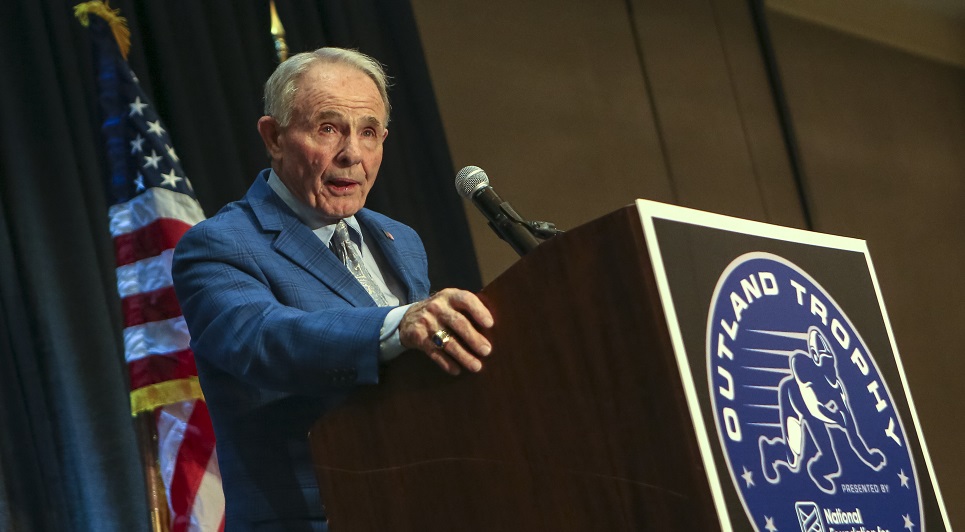
OUTLAND TROPHY AWARD DINNER
Tom Osborne Legacy Award Recepient
Fisher DeBerry
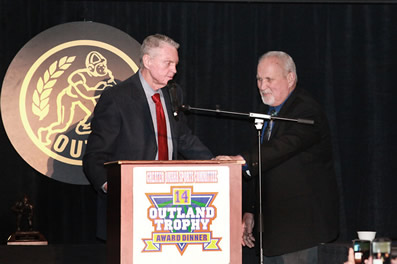
1st recipient-Milt Tenopir
2nd recipient - Jim Ridlon
6th Recipient - Fisher DeBerry
9th Recipient - Barry Alvarez
10th and 11th Recipients - Dan Young and Reese Morgan
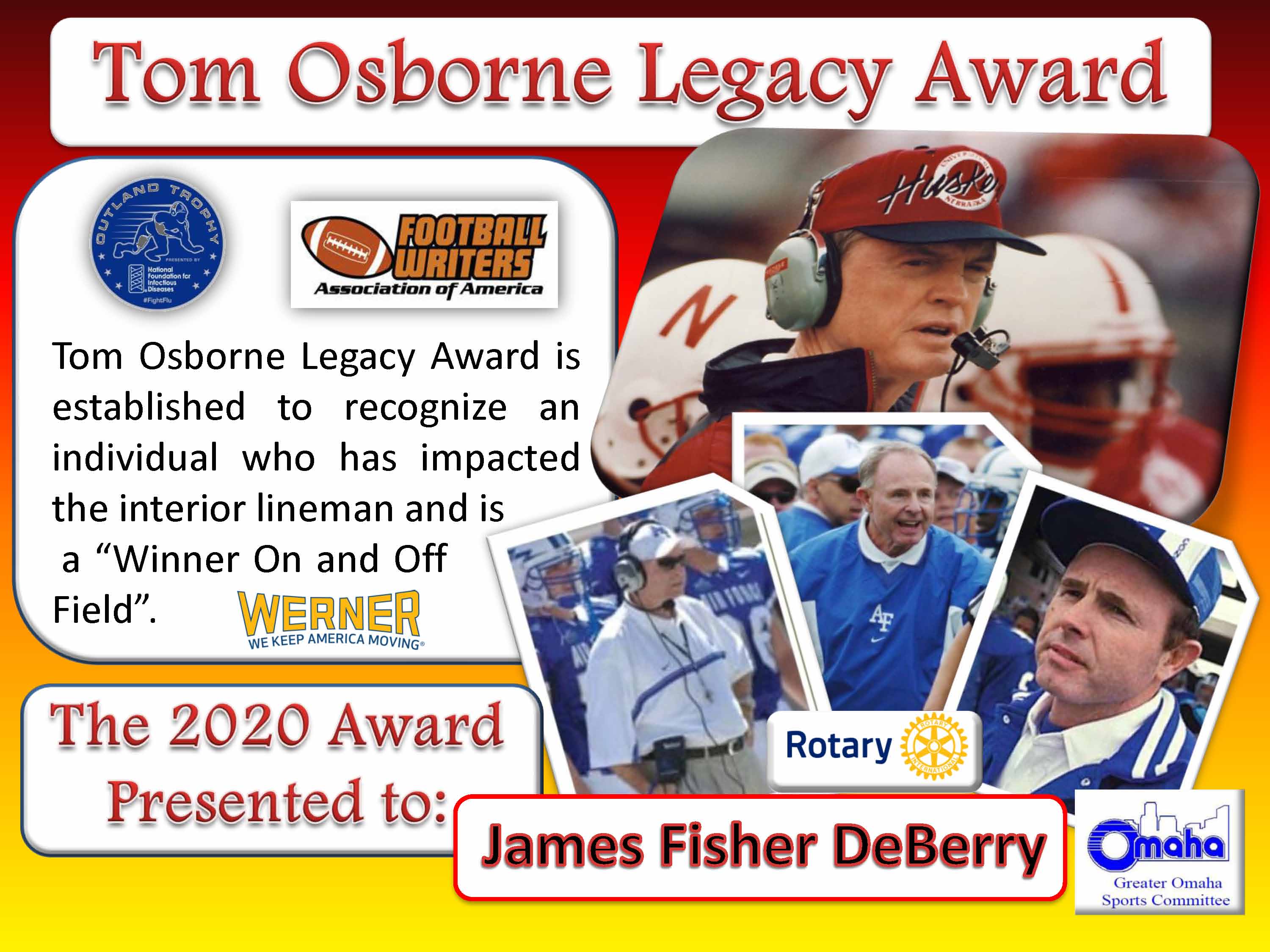
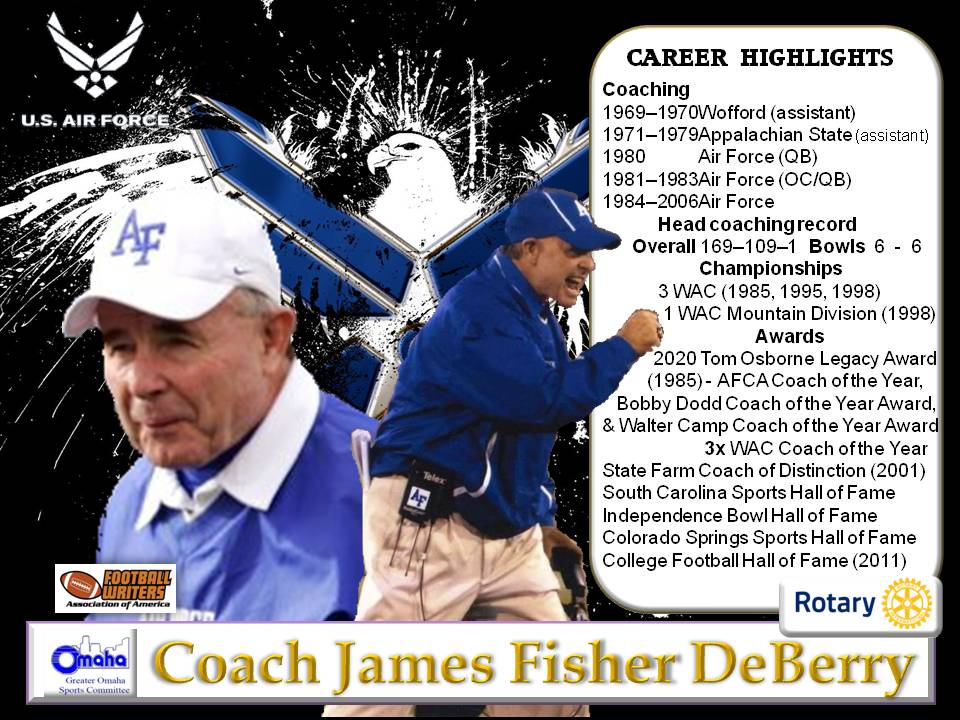
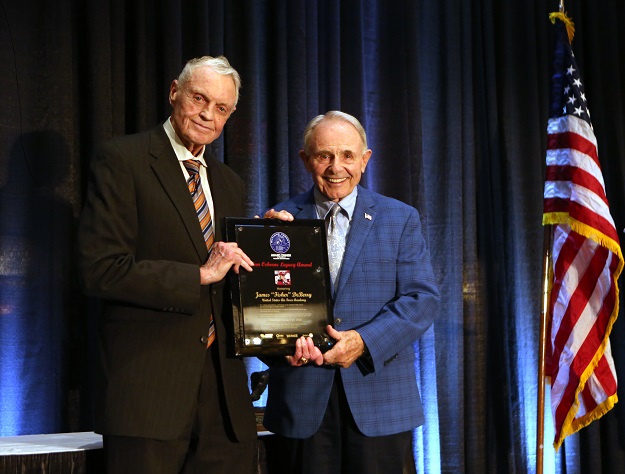

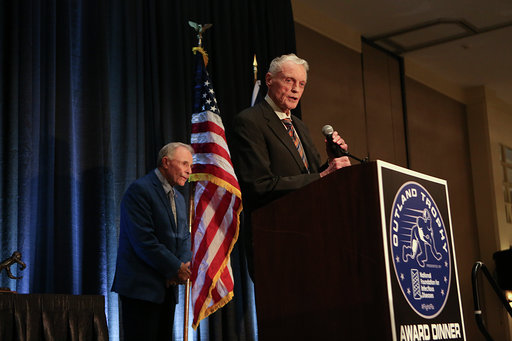
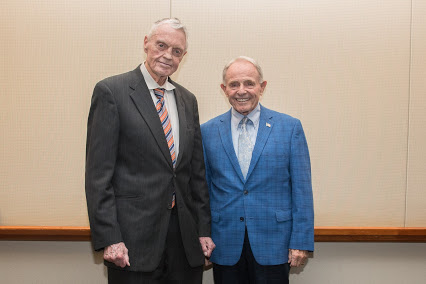
The Tom Osborne Legacy Award was presented — by Osborne to Fisher DeBerry— at the Outland Trophy Award Dinner Sponsored by Werner Enterprises at the downtown Hilton Omaha.
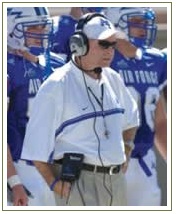
Fisher DeBerry
Retired Head Coach from United States Air Force Academy
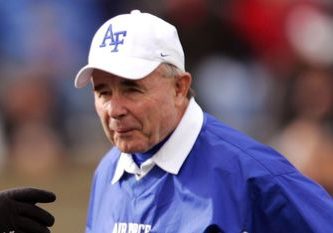
Fisher DeBerry served as head coach at the U.S. Air Force Academy for a brilliant 23-year career. He led 17 of his 23 teams to winning records, with 12 capturing bowl bids. His career record of 169-109-1 is the best in school history, in terms of both games won and winning percentage. He coached the Falcons to three conference championships and is the winningest coach at any service academy, having compiled a remarkable 35-11 record against Army and Navy. He was named national coach of the year in 1985 after his team finished with a 12-1 record.
Coach DeBerry was one of the game’s most respected coaches for his efforts off the field as well. In 1996, he served as President of the 10,000 member American Football Coaches Association and also served time as chairman of the AFCA Ethics Committee. In 2001, Coach DeBerry received the State Farm Coach of Distinction Award, in recognition of his football success, example as a role model to his players and service to his community. A native of Cheraw, S.C., he is a member of the South Carolina Sports Hall of Fame and Wofford College Hall of Fame.
More important than his lengthy list of coaching accomplishments, Coach DeBerry has been active in church, charity and community affairs. He has been active in the Fellowship of Christian Athletes and in 2004 was inducted into its Hall of Champions. He and his wife LuAnn have assisted fund-raising efforts for the Ronald McDonald House, American Cancer Society, Easter Seals, March of Dimes, Salvation Army and the American Heart Association. In 2004, they established the Fisher DeBerry Foundation, which exists to provide children of single parent homes with life-changing opportunities they wouldn’t otherwise have, such as sports camps and other activities.
“Fisher DeBerry is the guy who taught me that you can treat kids like they’re your own.” Jim Grobe current Baylor University Head Coach and assistant under Fisher DeBerry at Air Force.
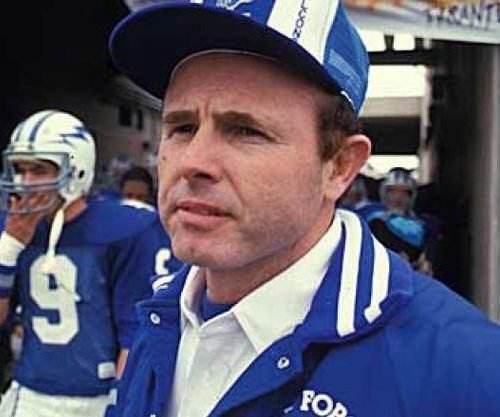
FISHER DEBERRY AND KEN HATFIELD “BREAK THE WISHBONE” AT AIR FORCE
DeBerry was a successful option coach at Wofford, Appalachian State, and as an Air Force assistant, but he takes the offense to the next level by “breaking the Wishbone” and flexing his slotbacks out wide, near the tackles.
Deemed the Flexbone, this forces defenses to defend more of the field horizontally, which would inspire much of the modern spread offense. Air Force’s Flexbone carries the Falcons as high as fifth in the AP poll over two highly successful decades.
Eventual national champ and spread innovator Urban Meyer will be among those reaching out to DeBerry for advice.
BILL MCCARTNEY REACHES OUT TO DEBERRY
McCartney struggles in his first three seasons at Colorado, going 7-25-1 while trying to be something of a “BYU of the Big Eight” by throwing constantly. Coordinator Gerry DiNardo would say “they were absolutely desperate,” and McCartney calls DeBerry, among others, for advice.
The early Wishbone installation doesn’t go well. From Tim Layden’s “Blood, Sweat and Chalk”:
DiNardo met with DeBerry, [Arkansas head coach Ken] Hatfield and [Arkansas State head coach Larry] Lacewell in the winter of 1985 and installed the option at spring practice. He took the practice tape to Lacewell to view during a national coaches’ convention. When DiNardo walked out of the room with his tape, Lacewell said to his fellow coaches, “I feel bad. They’ll be lucky to win a game.” The transition was comically painful. DiNardo recalls a preseason gathering in Denver with a booster club. One of the gentlemen in the audience stood up and, having heard of the conversion to the wishbone, said to McCartney, “Please tell me the first play of the season isn’t going to be a dive up the middle, because I don’t think I can stand that.”
McCartney let the question hang and then answered: “You might want to come for the second play.”
Somehow, the changes work. CU goes 7-5 in 1985 and averages seven wins per year over the next three seasons. And with recruiting both improving and fitting the system, the Buffaloes surge to 11-1 in 1989, then share a national title at 11-1-1 in 1990.
Quarterback Darian Hagan finishes fifth in the Heisman voting in 1989, running back Eric Bieniemy third in 1990, and running back Rashaan Salaam wins it in 1994 during McCartney’s final season. Even in a conference dominated by the option, CU finds a recipe that stands out.

